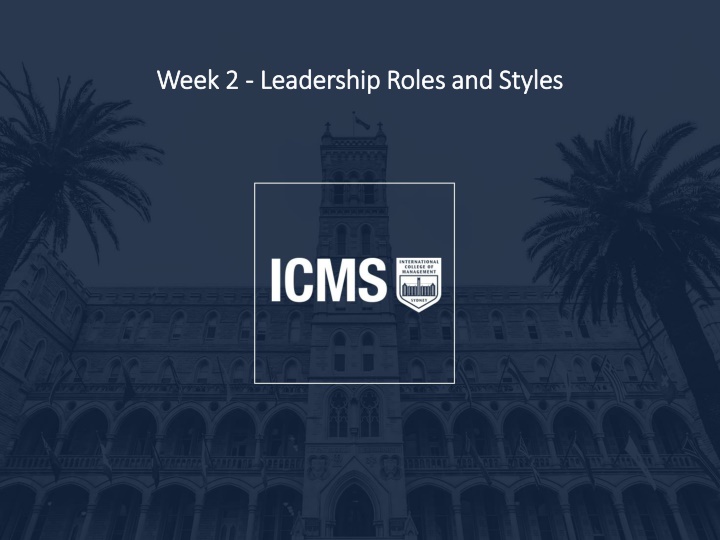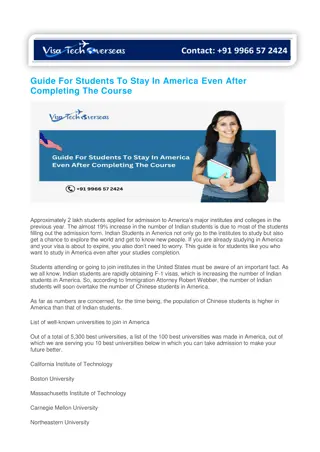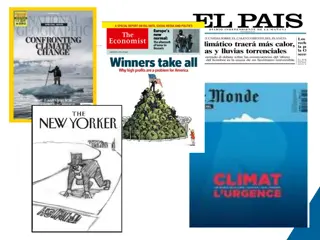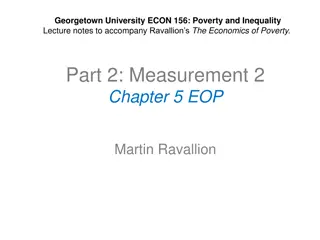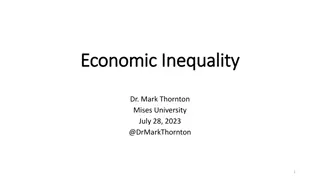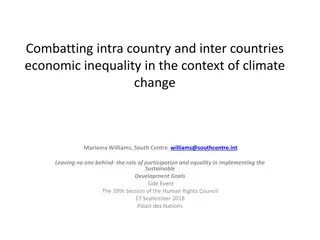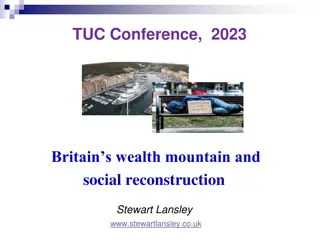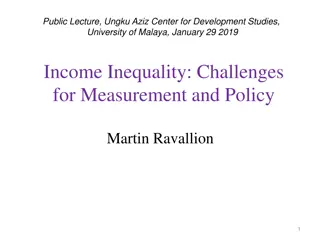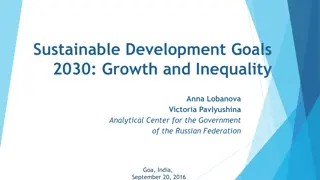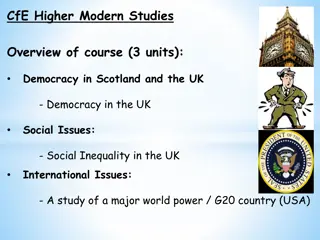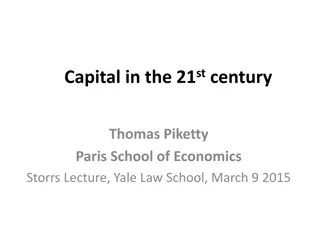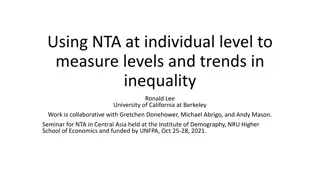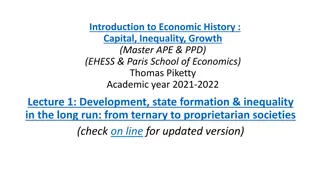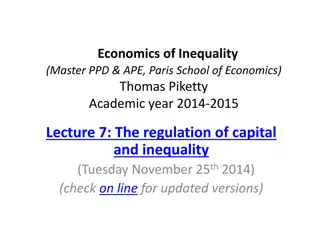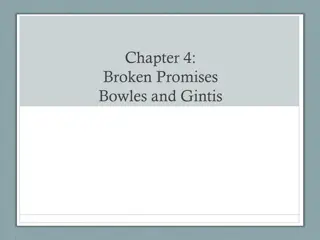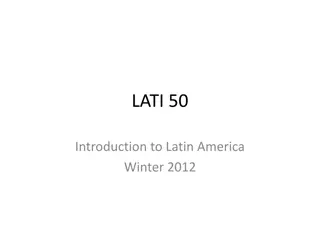Class Structure & Inequality in America
Exploring the composite American class structure and the empirical profile of inequality in America, focusing on the distribution of household income and wealth. Analyzing the share of national income going to different income groups over time to illustrate the great U-turn in inequality.
Download Presentation

Please find below an Image/Link to download the presentation.
The content on the website is provided AS IS for your information and personal use only. It may not be sold, licensed, or shared on other websites without obtaining consent from the author.If you encounter any issues during the download, it is possible that the publisher has removed the file from their server.
You are allowed to download the files provided on this website for personal or commercial use, subject to the condition that they are used lawfully. All files are the property of their respective owners.
The content on the website is provided AS IS for your information and personal use only. It may not be sold, licensed, or shared on other websites without obtaining consent from the author.
E N D
Presentation Transcript
Week 2 Week 2 - - Leadership Roles and Styles Leadership Roles and Styles
Recap: Q&A session on last weeks learning By the end of this week, students will be able to Understand the role of leadership in organisations Describe some key characteristics and styles of leaders Apply leadership theoretical frameworks and principles to understand the different roles of a leader
Definitions Leadership is about making others better as a result of your presence and making sure that impact lasts in your absence. (Harvard Business School definition of leadership, cited by Sandberg, 2013, 158). Leaders can and do change society, so it is imperative that they do so in a socially responsible and ethical way (Clegg et al., 2005, 233). 1. Leadership is a social relationship with three key components leaders, followers, and the contexts in which they interact (Nye, 2008, p. xviii) 2. (Nye, 2008, p. xviii)
What do/should Leaders do: Align people (i.e. manage meaning) to achieve workable unity Serve as a symbol Focus attention through a compelling vision Communicate meaning to their followers Develop trust through reliability and integrity
Leaders Look at the next 2 slides 1. How do we know these are leaders? 2. On what basis do we label these as leaders? Discuss in pairs for 15 minutes
Steve Jobs, CEO Apple (deceased) La Trobe Business School 6
https://www.forbes.com/sites/carminegallo/2013/08/16/10 -powerful-quotes-from-the-steve-jobs-movie-and-what- they-teach-us-about-leadership/#72dd864e6c8d Read article given in the above link and discuss the 10 Powerful Quotes From The Steve Jobs Movie And What They Teach Us About Leadership
Mother Theresa La Trobe Business School 8
Core Leadership Theories A theory is an explanation. It is a logical argument or framework designed to explain why certain things happen eg, Why does hot air rise? Which leadership styles/behaviours lead to greater job satisfaction among employees? Why do we consider some people to be leaders? 9
Leadership theories Great Man Theory/ Trait Theory 1900-1940s Behavioural Theories 1940 s-1950s Transactional & Transformational Leadership 1970 1990s Contingency Theories 1960s Values-based leadership 2000s 10
Core Leadership Theories 1.Trait theories 2. Behavioural theories 3. Contingency theories 11
Theories What Type of Person Makes a Good Leader? Traits theory Managers who are born with some traits become leaders. Others stay managers Behavioural theory Leaders are managers who behave differently under different conditions Contingency theory looking at defining leadership style and the situation, and attempts to answer the if-then contingencies (that is, if this is the context or situation, then this is the best leadership style to use).
Trait Theories What Type of Person Makes a Good Leader? Trait theories argue that effective leaders share a number of common personality characteristics, or "traits. Mainly developed in the 1950s. Fundamental to this theory: Idea that some people are born with traits that make them natural leaders. (Great Man Approach) But: Theory is highly contentious.
Trait Theories Know your Strengths A strengths arises from a natural talent that has been supported and reinforced with knowledge and skills. Concentrate on your strengths, not your weaknesses. Your personal strengths reflect your core values and provide you with a sure sense of direction. They energize and satisfy you.
Behavioural Theories What Does a Good Leader Do? Three types of leaders (Kurt Lewin): 1. Autocratic leaders 2. Democratic leaders 3. Laissez-faire leaders Behavioural theories focus on how leaders behave. Do leaders dictate what needs to be done and expect cooperation? Do they involve their teams in decision-making? Early research attempted to identify the best leadership style for all situations.
University of Iowa Studies Autocratic makes the decisions, tells employees what to do, and closely supervises workers Democratic encourages participation in decision, works with employees to determine what to do, and does not closely supervise employees 17
University of Michigan Leadership studies Job-centred leader Employee-centred leader takes charge to get the job done, focuses on meeting the human needs of employees while developing relationships, closely directs subordinates with clear roles and goals, is sensitive to subordinates, and tells them what to do and how to do it, and communicates to develop trust, support, and respect while looking out for their welfare. enforces standards 18
Behavioural Theories Uncovering effective leadership behavior Exercise in pairs Different leadership behaviours are appropriate at different times. The best leaders are those who can use many different behavioural styles, and choose the right style for each situation. Which leadership style is most efficient in which situation?
Contingency Theories How Does the Situation Influence Good Leadership? The best leadership style depends on the situation. These theories try to predict which style is best in which circumstance When you need to make quick decisions, which style is best? How to lead, when you need the full support of your team? Should a leader be more people-oriented or task-oriented?
Contingency Theories How Does the Situation Influence Good Leadership? Contingency leadership variables Leader Situation Followers Personality traits Behaviour Experience Task Structure Environment Capability Motivation
Contingency Theories Path-Goal- Theory (Robert House, 1971) Help: Helping team members to identify and achieve their goals Support: Clearing away obstacles Motivation: Offering appropriate rewards Supportive Leadership Directive Leadership Leadership Styles Achievement- oriented leadership Participative Leadership
Contingency Theories 4 Types of Situational Leadership The Situational Leadership Model suggests that there is no one size fits all approach to leadership. Leaders must consider the readiness level of their followers by analyzing the group s ability and willingness. Depending on the level of these variables, leaders must apply the most appropriate leadership style to fit the given situation. Four types of Leadership: 1. Directing 2. Coaching 3. Supporting 4. Delegating
The Golden Circle How Great Leaders Inspire Action, by Simon Sinek https://www.inspiringleadershipnow.com/best-ted-talks-on- leadership/
View the video on leadership : https://www.youtube.com/watch?v=vlpKyLklDDY for discussion in Week 3
Please go through Week 3 Lesson Plan- Responsible Leadership and influencing organisation culture By the end of this week 3, students will be able to Understand and apply how leaders shape culture and values Know how responsible leadership instills healthy values in the organisational culture Identify the values associated with adaptability, achievement, involvement, and consistency cultures and the environmental conditions associated with each
